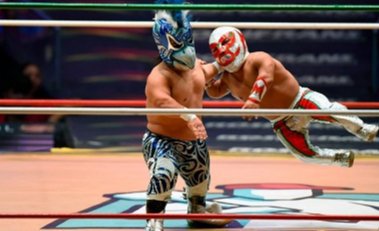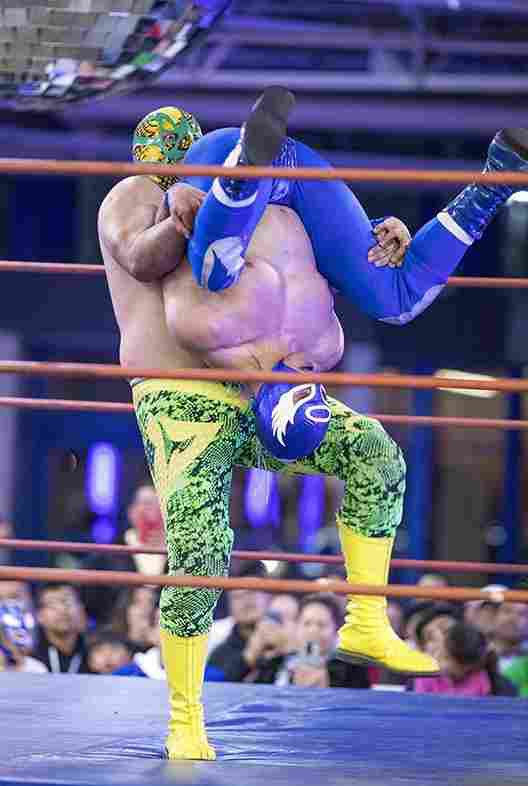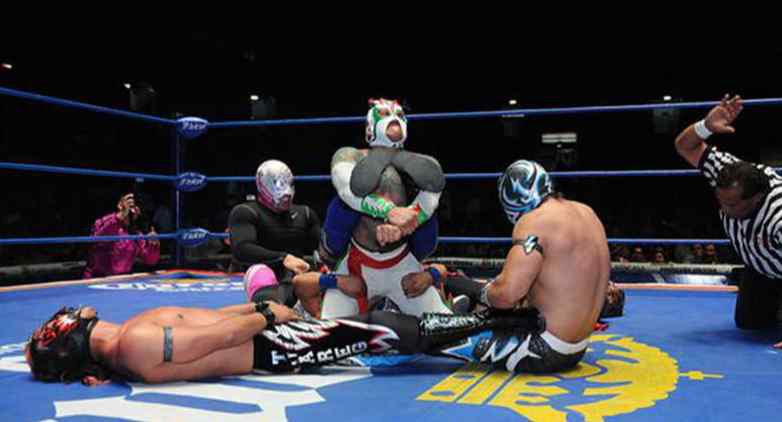There’s nothing quite like Friday night fight night at the Arena México. This long-standing venue in central Mexico City is the place to see one of the country’s most raucous and dramatic sporting events, Lucha libre.
Mexico’s version of professional wrestling is one of the country’s biggest spectator activities today, eclipsed only in popularity by soccer.
It is characterized by colorful masks, flamboyant personalities, and a whole lot of Spandex. It is an edge-of-
your-seat spectacle like no other and something that shouldn’t be missed.
In the past 20 years, it has gained international acclaim for its distinctive style and culture. Mexico is one of the most influential nations in the world of professional wrestling.
The sport allows fans to root for técnicos, rudos, and exóticos and it provides theater that upends societal norms in Mexico.
The rules of Lucha libre echo those of American pro-wrestling; two or more wrestlers face off in a ring and try to pin their opponent(s) down for three seconds over the course of three rounds.
And, much like pro-wrestling north of the border, the stories and stunts of every match are carefully choreographed.
Ask any luchador, however, and they’ll tell you that Mexican wrestling requires far more athletic skill; the emphasis in Lucha is on spectacular aerial maneuvers rather than just muscles and brute force.
There are also exóticos, homos$xual characters who have increasingly become fan favorites for their flirtations and exaggerated behavior in the ring. The mask is central to Lucha libre. Originating in the 1930s, it became one of the defining aspects of the sport.
To lose one’s mask could have a detrimental impact on one’s career. It is rarely lost and only for special occasions. The most famous luchador of all time, El Santo, did not reveal his face until well near his death.
After his death, his son assumed the persona and the mask under the name El Hijo del Santo. Later, in the middle of divorce proceedings, his soon-to-be ex-wife released photographs of El Hijo de Santo’s real face. The wrestler and his lawyers quickly asserted that
those photographs were of another man.
Lucha libre also differentiates itself from U.S. professional wrestling with its acrobatic moves. This has an impact on the athletes’ bodies, as luchadores are not as muscular as their North American cohorts.
The overly muscular builds of North American wrestlers prevent them from engaging in the skillful and aerial style that luchadores employ. This style includes moves like the Huracánrana, a flying head scissor move that ends with the luchador using his legs to pin his opponent. It is named for Huracán Ramírez, who is credited with inventing the move.
Lucha libre must also be distinguished from the sport of boxing. Both sports take place in rings, and they often share arenas. In addition, many domestic and international magazines cover both sports.
That said, important distinctions exist. First, boxing, like mos
t sports, does not have a predetermined finish, at least in theory. In Lucha Libre, the match-winner is determined before the match starts. Therefore, it is possible to bet on boxing matches, but not on Lucha libre matches.
Its origins date back to 1863 when a Mexican wrestler, Enrique Ugartechea, first developed the art of ‘free-style’ wrestling based on Greco-Roman traditions.
Jump forward a few decades to the early 1900s and wrestling’s popularity started to grow after two Italian businessmen began promoting no-holds-barred fights.
In 1933 Salvador Lutteroth Gonzalez, ‘the father of Lucha libre’, established the Empresa Mexicana de Lucha Libre (EMLL, The Mexican Wrestling Organisation). Within a year of the EMLL’s creation, matches were being sold out.
Today the EMLL is known as the Consejo Mundial de Lucha Libre (CMLL; World Wrestling Council) and its home, the 17,000-seat Arena México, is the Mecca of professional Mexican wrestling.

























